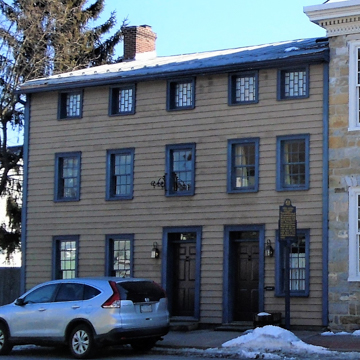The wild and ambitious older brother of the future governor, John Snyder was a notorious gambler who died from a fall riding a horse in the Stumpstown race at Middleburg in 1787. His two-story log house with a sidehall plan forms the core of this colonial house banked into a slope on Market Street. Clad in hand-planed beaded, wide pine clapboard, the house has retained much of its interior woodwork, including the cherry banister on the staircase and corner fireplaces on the first and second floors. Over the years it housed the secret meetings of the Masons, and served as a post office and rectory of the Episcopal church.
You are here
John Snyder House
If SAH Archipedia has been useful to you, please consider supporting it.
SAH Archipedia tells the story of the United States through its buildings, landscapes, and cities. This freely available resource empowers the public with authoritative knowledge that deepens their understanding and appreciation of the built environment. But the Society of Architectural Historians, which created SAH Archipedia with University of Virginia Press, needs your support to maintain the high-caliber research, writing, photography, cartography, editing, design, and programming that make SAH Archipedia a trusted online resource available to all who value the history of place, heritage tourism, and learning.















